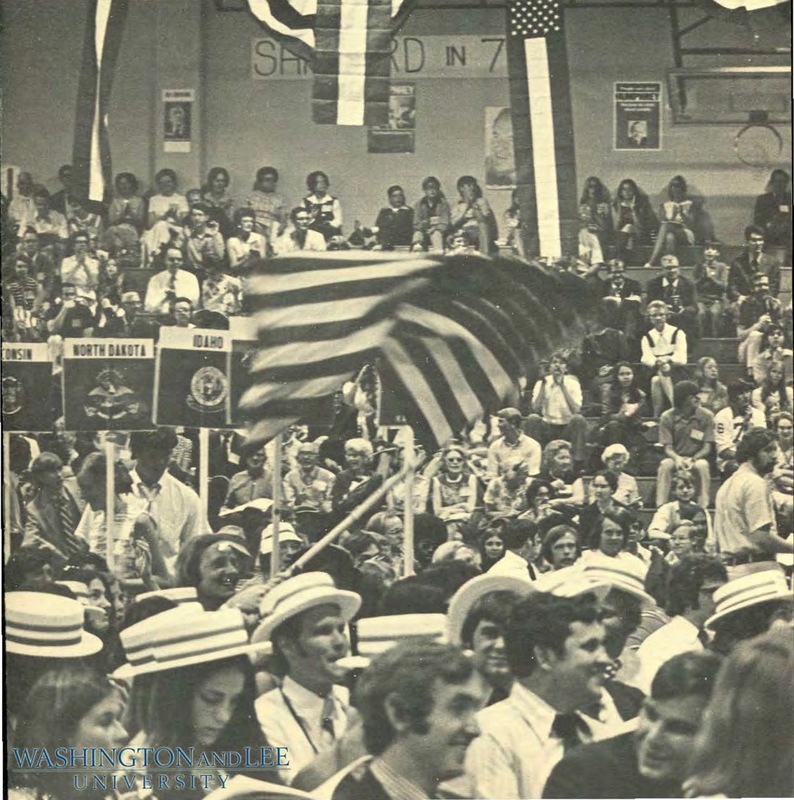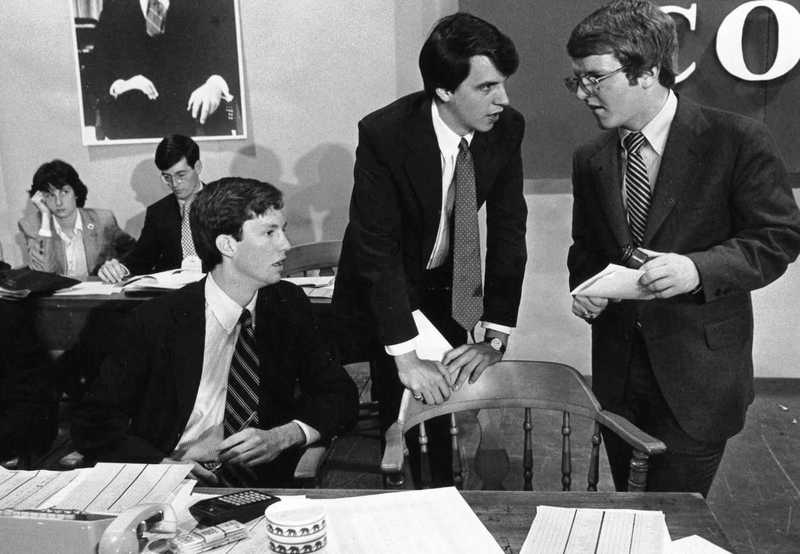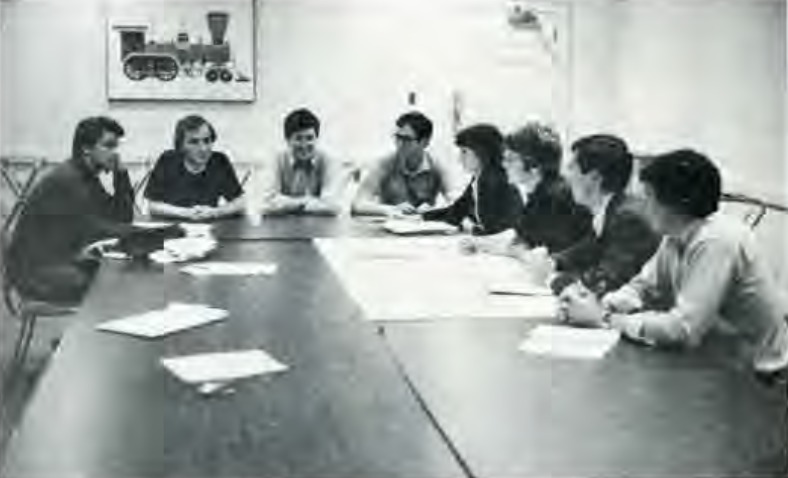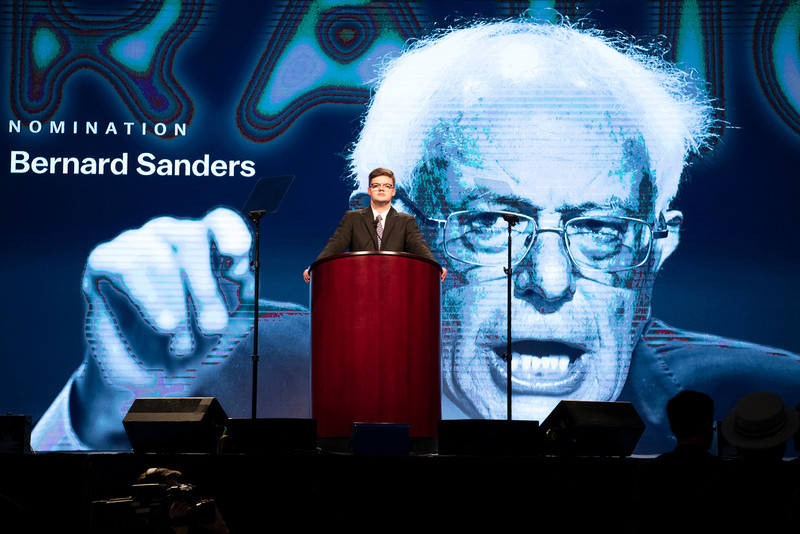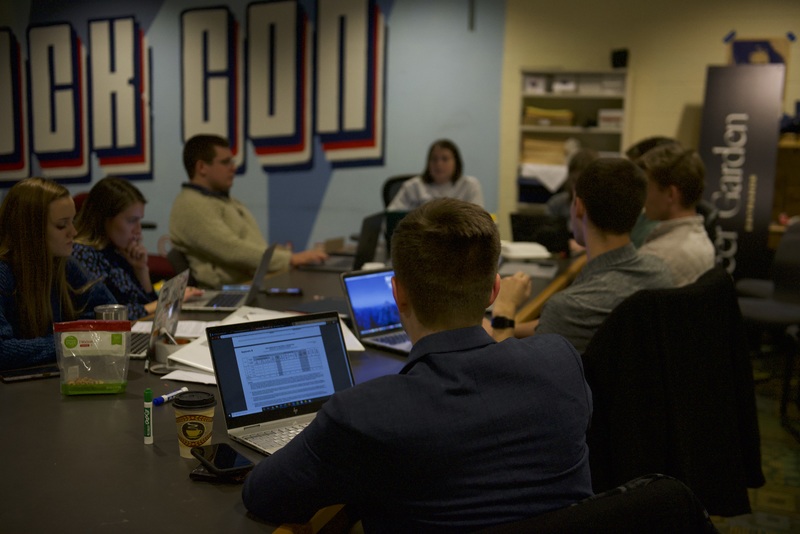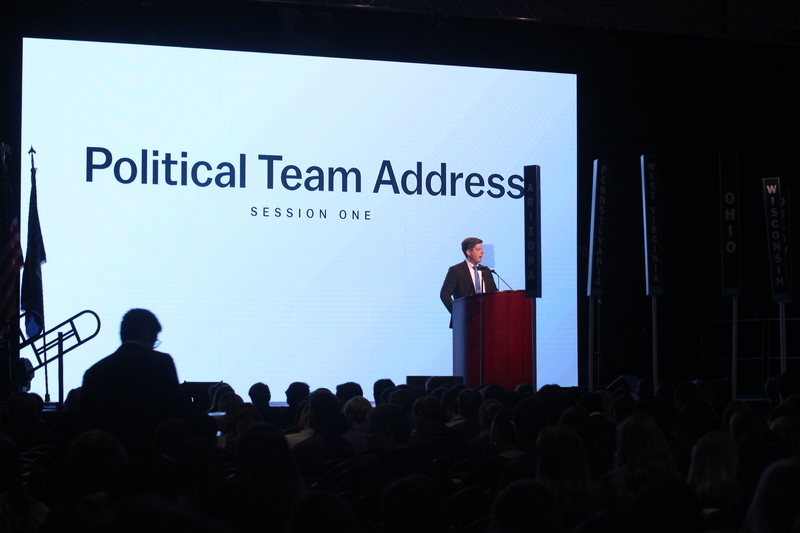Evolution of Technology
1980 Mock Convention Delegates have prepared for this moment, annoucing the Republican Nominee Selection. 1980 marked the first year that the Convention was computerized. While not necessarily utilized for research, the event itself progressed technologically this year. The 1980 Steering Committee correctly selected Ronald Reagan as the Republican presidential nominee.
The 1980 Mock Convention Steering Committee was comprised of 18 chairmen headed by three leaders, Craig Cornett, Sidney Simmons and Dick Schoenfeld. Cornett has the primary responsibility for political research working day in and day out with the state chairs. "For over a year and a half, state chairmen have been supervising a variety of activities, the most important being research. With the help of some well-placed contacts and in their respective states the state chairmen, by now, have an in-depth understanding of the political processes and people behind it," Cornett explains.
For the 1980 Mock Convention, each state chairman educated themselves on the political system in their given state. Next, chairmen compiled political profiles of their state and congressional district. Students researched the political history and tradition of their state, the formal structure of the state’s government, and the state’s Republican party. Next, a list of contacts was created including the names of elected Republican leaders at the federal, state, and local levels, Republican party officials and professionals, political editors and writers of major newspapers, and knowledgeable political scientists from universities and colleges within the state. State delegations also purchased subscriptions for major newspapers within their state. The state chairmen then researched how the state’s Republican party selected delegates for the Republican National Convention, which was particularly crucial in the research process. This final step helped students to make informed decisions about events in their states. Sam Flax further explains the final steps of the process, “the students mailed surveys and questionnaires to Republican officials and politicians, journalists, and political scientists. The students sought to determine what candidate likely would receive the state's delegate support, who are the "power brokers" in the state, and who would be most likely to receive the Republican vice-presidential nomination.” The correspondence between state chairs and their contacts continued right up to the convention.
Through meticulous research spanning four years, the Washington and Lee Mock Convention Steering Committee selected Bernie Sanders as the 2020 Democratic Mock Convention Nominee. The 2020 Convention marked a challenging year in history, as the research team and delgates were selecting from a large array of candidates.
According to Midwest Regional Chair on the political team, Drew Weinstock, “the research was largely broken into two segments: local and national.” The political team followed national trends, storylines and polling trying to match that with their research done at the more local levels. This local research included primary research with local journalists, exploring demographic data and historical primary voting trends. The selection process for Mock Convention was particularly challenging in 2020 because state chairs and the political team had to determine how the sequence of primaries, including the longevity of certain campaigns would affect the long-term results. According to Weinstock, the team weighed Sanders’ strength from the first two primaries in addition to the fact that, unlike the Republican primary, the Democratic primary allocates all of the current delegates proportionally at the state and district levels when making the final decision.
The 2020 Mock Convention was full of firsts, according to Political Chair John Harashinski. 2020 was the first year where the race began with 24 candidates, the first year that the winner of Iowa dropped out before Super Tuesday, and the first year that W&L utilized a computer science algorithm that gathered data for the political team. The abundance of information, news sources and technology advancements really separated the 2020 Mock Convention from years past. The political team utilized national polling, endorsements and momentum to determine how candidates would perform in addition to when candidates would drop out of the race. “Polls are great, they’re phenomenal, but they are only a snapshot in time,” says Harashinski, so working with local political insiders, journalists, and academics to further understand who might win or who has the best infrastructure and raises the most money was particularly important to the political team when narrowing down the nominee selection. Taking a local in addition to a national approach is crucial to the team’s success as technology gives insight into the constantly evolving and changing nature of the candidacy race. A wide national and local network in tandem with a metadata approach helped the team better comprehend trends, demographic data, and candidate mentions across news sources. The influence of technology in the 2020 Mock Convention separates it from not only previous years, but particularly 1980, where technology was minimal and not used until the time of the actual convention. While it’s hard to speculate whether technology advances the success of Washington and Lee Mock Conventions, its presence alters the process and changes the way the political team operates.
